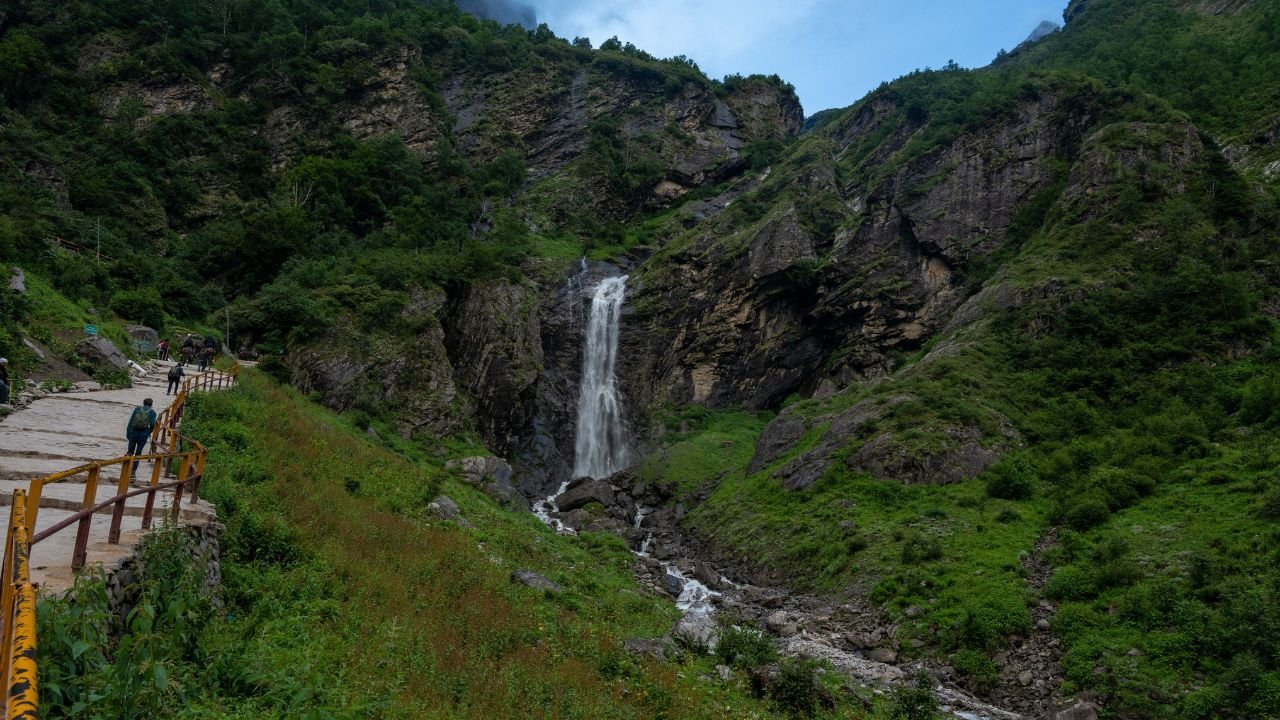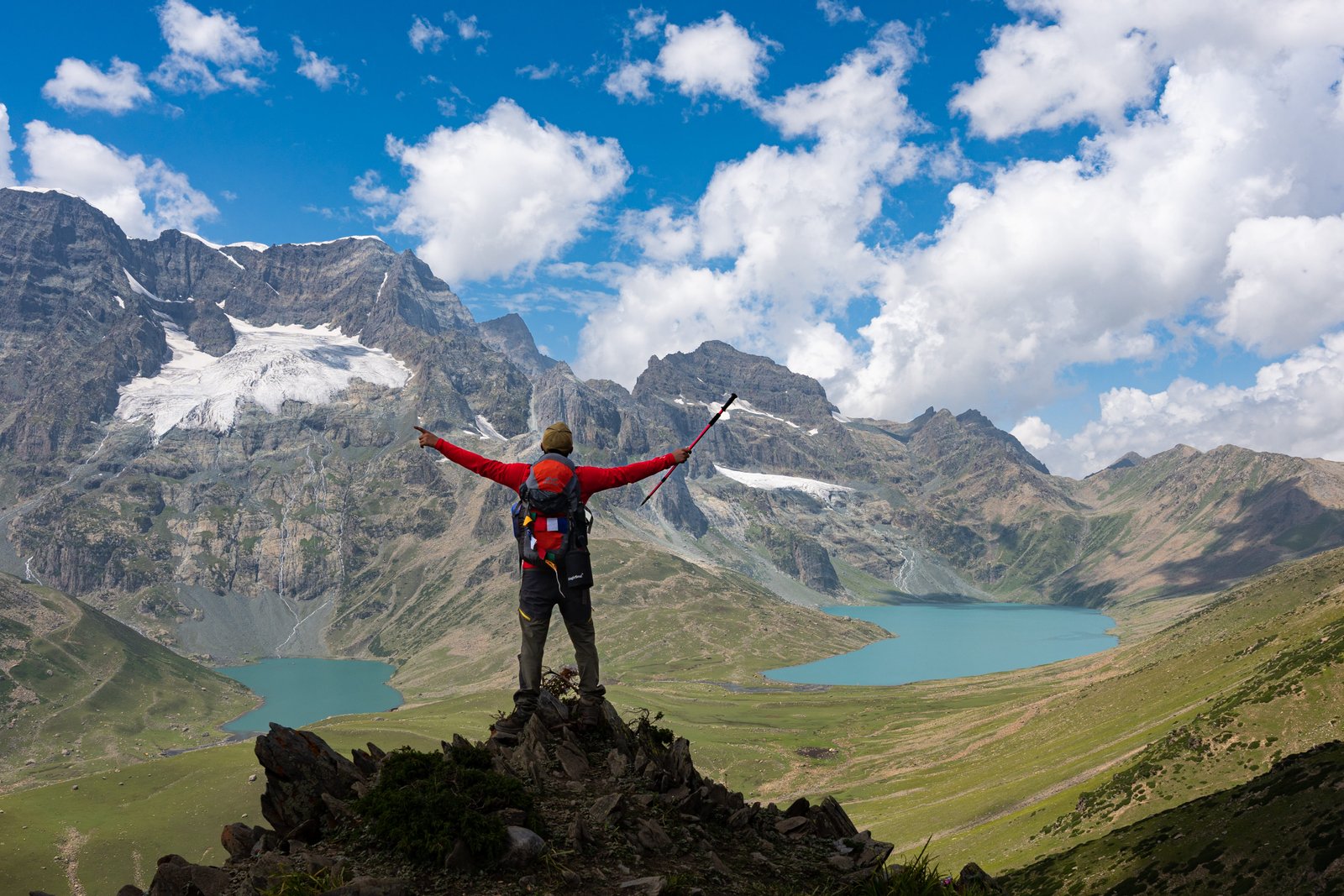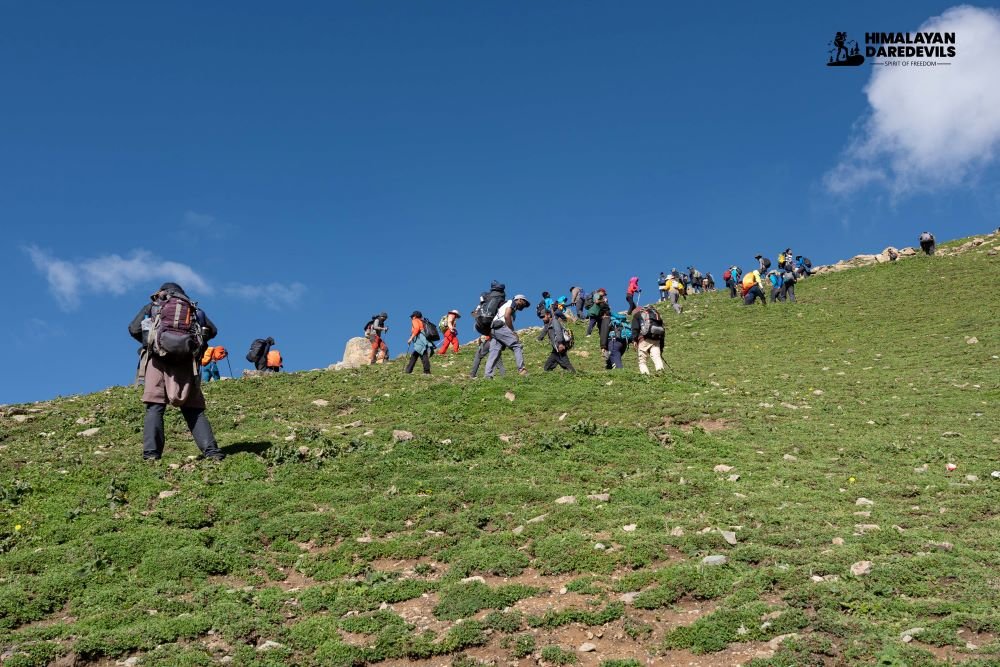Starting From
20,125
17,500.00

Starting From
20,125
17,500.00
Starting From
20,125
17,500.00
Kashmir Great Lakes Trek (222+ Reviews)
Cross over trail | Start in one valley, traverse the pass, and ends in another valley.
Jammu Railway Station
Srinagar Airport
Sonmarg (90 Kms drive from Srinagar,approx. 3 hours)
July | August | September |
Sonmarg to Naranag
Veg
Camping
Jammu and Kashmir
7 Days
Moderate
13650 Ft
74 Km
Kashmir Great Lakes Trek Overview
The Kashmir Great Lakes Trek is a beautiful trek that goes through the mighty himalayan mountains and vast green meadows to take you to the great alpine lakes of Kashmir. Every bend on this trail presents a stunning view of vast valleys and snow peaked himalayas that attract thousands of adventure hungry trekkers every year.
To see the 7 great lakes of kashmir you will have to trek for a week and cover a total distance of 75 kms, passing through deep valleys and high mountain passes like Nichnai, Gadsar and Zaj Pass. These lakes, each different from the other, are filled with crystal clear glacial water that perfectly reflect the Himalayan mountains that surround them.
Starting from Sonamarg, which is situated at an altitude of 2,377 m, the trek reaches its highest point at the Gadsar Pass (4,191 m) after which the trek descends and then ends at Narang (2,073 m) , by the end of your week long trek you will have seen the seven beautiful alpine lakes namely - Nichnai Lake, Vishansar Lake, Kishansar Lake, Yamsar Lake, Gadsar Lake, Gangabal Lake and Nandkhol Lake.
While moving through the Kashmir Great Lakes Trek you will also get to witness the great mountain peaks, some near some far away. The Kolahoi Peak, Amarnath Peak, Machoi Peak, Sirbal Peak, are some of the peaks that you will see, along with Mount Harmukh which is visible from Zajibal Pass, offering stunning views alongside the Gangabal and Nundkol lakes.
The best time for the Kashmir Great Lakes trek is from July to September. The weather is pleasant during these months and the trail is clear after the melting of the deep winter snow. The clear blue sky offers expansive vistas of sloping green valleys and high himalayan peaks reaching the sky, all visible clearly under the warm summer sun.
The 7 lakes trek, due to the variations in the height of the region and the variety of terrain falls under the category of moderately difficult treks, because of which trekkers are required to be in good health and take proper attention to the altitude.
Best Time for Kashmir Great Lakes Trek
KGL Trek is a beauty that every trekker admires, the best time for the Kashmir Great Lakes Trek is between early July and mid September. This short time span gives you the best chance to appreciate the valley in all its pristine glory with the alpine lakes, meadows filled with wildflowers, and towering peaks. This time frame is suitable for both beginners and experienced trekkers looking forward to undertaking the KGL trek. Beyond this timeframe, trekking becomes challenging as the trails disappear underneath snow.
Does Monsoon Affect the Kashmir Lakes Trek Experience ?
Many trekkers tend to be skeptical about attempting KGL Trek in July and August out of fear of monsoons that usually creates problems in other regions of India. This is indeed a legitimate concern, and Kashmir does tend to surprise the trekkers. Many regions in India such as Uttarakhand or Himachal Pradesh often have the same problem, the heavy rain ruining the trekking operations. But Kashmir is an exception and follows different weather patterns. The mighty Pir Panjal range, which is from 40-50 km wide and 288 km long, serves as a blockade preventing a majority of monsoon clouds from reaching the valley of Kashmir.
With this natural advancement, known as rainshadow effect, the rest of the subcontinent can find peace during, even at the peak of monsoon. This climatic phenomenon guarantees calm skies and favorable trekking situations, while also adding to the region’s unique features. Moreover, the Kashmir Great Lakes Trek is considered one of the best monsoon treks.
Essential Tips to Enjoy KGL Trek during the monsoon season
The iconic Kashmir Great Lakes trek is open to the trekkers from June to September which are also the months when the monsoon clouds surround the Indian Subcontinents. It is essential to keep some things in mind to experience a hassle free trek.
1. On your way to reach the Seven Great Lakes you may encounter light showers. It is recommended that you carry good rain cover/poncho and also keep an extra pair of clothes.
2. The trail can get muddy, slippery and filled with puddles because of the rain. A Good pair of high ankle waterproof shoes with good grip and a trekking pole are your best friends in these conditions.
3. The rainy conditions also bring out the Insects and leeches, you may find them in forested patches along the way. These insects, though harmless, can be a nuisance. It is recommended that you wear a long sleeved shirt and full length trekking pants and carry Insect repellent and Dettol.
4. Trekking in Kashmir during the monsoon also means encountering dampness. To keep your belongings, like electronic devices. safe make sure to bring some dry sacks or zip lock bags.
Temperature on the KGL Trek
During the months of July and September, the moderate daytime temperature In the great lakes trek ranges from 10 °C to 20 °C. However, nights can be much colder, with temperatures dropping to 0 °C to 5 °C. The summer season brings vibrant greenery and blooming flowers to the area, while the lakes remain unfrozen and rather appealing to the eye, making the entire view magnificent. By trekking during this time, the chances of encountering dangerous winter weather conditions and snow remain low, making the trek both easier and extremely enjoyable.
The Seven Alpine Lakes of the Kashmir Great Lakes Trek
While trekking through the Kashmir Great Lakes Trek you will come across the seven beautiful lakes, which are:
Vishansar Lake: Vishansar Lake is situated at an impressive height of 12,000 feet above sea level. The lake is surrounded with lush green meadows and towering mountain peaks. The water of the lake is crystal clear and bluish green which reflects the different shades of the sky. Vishansar Lake is one of the most beautiful destinations for those seeking peace and nature’s beauty.
Krishansar Lake: Krishnasar Lake is located at approximately 12,500 feet. The lake is renowned for its shimmering turquoise waters and its vibrant reflection of the surrounding landscapes. The lake is inhabited with countless grazing sheep providing additional charm to the breathtaking scenery.
Gadsar Lake: Known as the Lake of Flowers, Gadsar Lake is located at an exceptional altitude of 13,750 feet. The lake is surrounded with vibrant patches of snow. The Gadsar lake is one of the most isolated and coldest bodies of water, which makes it truly captivating.
Satsar Lake: The Satsars are a group of interconnected seven alpine lakes situated amid rocks, which are at 12,000 feet above sea level. The lakes are surrounded with giant meadows and boulders. The peacefulness of the area offers the trekkers a pleasant experience.
Gangabal Lake: Placed at the base of Mount Harmukh, Gangabal Lake is considered a holy lake and respected in equal measure by the locals. With a height of 3,505 meters, it is not only the highest lake on the trek but also the largest, with waterfalls jumping into it from the glaciers. The postcard view is completed with astonishing reflections of the ice-capped peaks.
Nundkol Lake: Nundkol lake is located just next to Gangabal Lake and is at a height of 3,604m. Nundkol Lake is situated within an alpine meadow and surrounded by rugged granite cliffs. This lake is also renowned for its deep blue water that reflects Mount Harmukh. The beautiful serene place along with the gentle streams nearby makes everything tranquil, calm and beautiful.
- Yamsar Lake: This lake lies hidden amongst the rough mountains at a higher altitude and has mythological significance. Not as big but equally spiritual, Yamsar Lake is different from the rest of the lakes. The beauty around the lake combined with its still and reflective water, creates a beauty along with a sense of calmness.
Is The Kashmir Great Lakes Trek Difficult ?
The KGL trek, because of the terrain and the altitude, is a moderately difficult trek. The trek can be completed by a beginner if he or she is physically fit. Here are some of the factors that make the trek a tad bit challenging than your average trek : 1. The Altitude : The great lakes trek begins at Sonmarg which is at an elevation of 2,377 m, (higher than Mussoorie). The trek then climbs up, gaining altitude with each passing day. It gets important to acclimatise and plan each checkpoint effectively. 2. The Duration : The trek to see the 7 lakes will take at least a week. To stay in a remote and distant place away from the comforts of a modern life for such long duration of time can be difficult for many. 3. The Terrain : The Trail of the KGL trek is 75 kms long and in this distance you will tread through thick forests, carefully walk on narrow ridges, balance your way on slippery slopes and tackle the cold weather. 4. The Weather : Trekking in Kashmir means dealing with the unpredictable weather of the high Himalayas. It might be sunny with crisp blue sky now and in a minute the vistas might get covered with white clouds bringing with them cold drizzling rain. The weather adds to the excitement and adventure.The unique cultural elements provide enough reason to take this trek, besides the challenges it presents to nature enthusiasts and other adventurers. The diverse landscapes, which includes impressive mountain ranges and serene lakes, offer a fascinating experience that distinguishes this trek from others. Each day of the hike reveals new surprises which includes lush green forests and pristine lakes.
There is no doubt that the Kashmir Great Lakes Trek offers both a physical challenge and an immersive experience in the breathtaking beauty of India. In simple terms, every trekker is left with everlasting memories of stunning landscapes coupled with a strong feeling of success and achievement.
The Twin Lakes of The KGL Trek
While on the Kashmir lake trek after you conquer the Zajibal Pass, you will witness the true beauty of the twin lakes. The lakes of Gangabal and Nundkol, standing still In the lap of the Himalayas, provide breathtaking views that are sure to be etched into your memory forever.
The Gangbal Lake is also known as the ‘Ganga of Kashmir’ and is the larger one among the two lakes, the lake has a deep turquoise color. The Nundkol Lake on the other hand is of a greenish blue tint and is surrounded by green grassy slopes. Both of these glacial lakes are about 10 to 15 minutes apart and are connected by a small stream.The reflection of the sky paired with the Harmukh peaks makes the entire area appear magical. It is truly a treat for the eyes.
Captivating Attraction Of The Satsar Lake
You reach Satsar Lake on the fifth day of the Kashmir Great Lakes Trek. Satsar, meaning ‘seven lakes’, is a cluster of lakes protected by the high himalayan mountains. The lake offers an exquisite panoramic view of lush green meadows, patches of snow on the mountain peaks and the crystal clear lake below it all reflecting the blue sky.
The Satsar Lake is the next destination right after the Gadsar Pass, the highest destination of the KGL trek. After witnessing the beauty of the Gadsar Lake you begin the 11 KM journey to Satsar pass which will take about 4 to 5 hours. On reaching closer to the Lake you are welcomed by wild strawberry patches and the vibrant carpet of alpine flowers, the Satsar Lake then reveals itself, its beauty lightens you up.
Gadsar Pass: The Crown Jewel of The KGL Trek
At 4,191 m the Gadsar Pass is the highest point of the Great Lakes trek and because of this reason the Pass is a natural milestone of the trek. The trekkers walk for days in excitement to reach the spot, and are left speechless when they witness it.
- The Gadsar Pass offers a vista of striking contrast as from this point you leave behind the green meadows and are welcomed by the alpine landscape.
- The pass offers a panoramic view of the Kishansar and Vishansar lakes behind you and the Gadsar Lake in front of you, all of this surrounded by the great himalayan peaks.
- Reaching Gadsar Pass is tough and when you finally reach this beautiful location it all seems to be worth it.
Some Things to Keep in Mind before Trekking the Kashmir Great Lakes Trek
- Trekking Season : The best time for Kashmir Great Lakes Trek is from June to September. During these months the weather is pleasant and the fauna is in full bloom.
- Physical Fitness : The KGL trek is of moderate difficulty and it is essential for trekkers who want to set out on this journey to be in a good physical state.
- The Altitude : Trekking on the 7 lakes trek means climbing up to reach the alpine lakes situated in high altitude locations. There is always the fear of altitude sickness if one gains altitude too quickly. Throughout the trek one must follow the expertly planned itineraries and acclimatise to avoid altitude sickness.
- Permits : A permit issued by the local authorities is required to trek. The permit is usually obtained by a trekking agency.
- Mobile and Connectivity : Due to the remoteness of the location the network connectivity in the region is poor. Only BSNL works spottily near Sonamarg.
Safety With Himalayan Daredevils At The Himalayan Daredevils our first priority is your safety. With certified trek guides and small group sizes we ensure that everyone gets the much needed guidance along every step of the way and the trek is made as pleasant as possible for everyone. While on the KGL trek, our groups carry first aid kits, oxygen cylinders and satellite communication devices for emergencies, we also have workers from the local population in our team who know the region inside out, which means safety and also detours to unseen locations. Choosing the Himalayan Daredevils means choosing safety, ease of travel and an unforgettable experience. Why Should You Choose Himalayan Daredevils ? Choosing a trekking company for the KGL trek means joining a team that will be with you for a time of 7 days, experiencing the joys and the challenges of the trek with you, guiding you through the remote terrain to reach the alpine lakes of Kashmir. It is important to choose a good travelling partner for this journey. The Himalayan Daredevils provides certified guides, local expertise and personalised attention ensuring a safe, enjoyable and affordable trekking in Kashmir. Our Kashmir Great Lakes trek package includes well planned itineraries, healthy delicious meals and clean campsites so that the only thing you have to care about is experiencing the bounties of mother nature.
Kashmir Great Lakes Trek Itinerary
Drive from Srinagar to Sonmarg. Witness the beautiful Himalayan scenery
Spend the evening at Sonmarg. Prepare for the next day and enjoy the peaceful setting.
SHORT ITINERARY
Distance: 90 KM / Time: 3 to 4 Hours / Altitude: 2,730 meters
DETAILED ITINERARY:
As the trip to Kashmir begins, make a start with a drive from Srinagar to Sonmarg, the commencement point of your trekking adventure. Just a three-hour drive, the excursion offers an enjoyable view of snow-topped mountains, calm rivers, and traditional Kashmiri huts. The abundant nature takes you by surprise, especially after leaving the busy markets of the city. Sonmarg or ‘The Meadow of Gold’, surrounded by towering grits and lush green meadows, is known to be untouched by civilization.
As you drive, you will see eye-catching places on the route like Mammar and the recorded videography of the great Himalayas in the far sight. The wonderful weather, accompanied by the gorgeous view is bound to lift your spirits.
After arriving at Sonmarg, you will check in at the campsite that is able to offer plenty of comfortable lodgings. The evening can be spent while having an appetizing dinner at the campsite and walking around taking in the natural beauty. The peacefulness of this setting serves as the ideal venue for settling in and adapting to the environment in preparation for the trek that is scheduled for the next day. Prior to retiring to bed in the luxurious comfort of the gentle tents, take a moment to tilt your head back to view the stunning starlit sky.
First day of the trek. Reach the first campsite at Nichnai
Witness the beautiful snow capped mountains and alpine meadows at Shekdur.
Reach Nichnai by evening and camp there for the night.
SHORT ITINERARY:
Distance: 11 KM / Time: 6 to 7 Hours / Altitude: 3,505 meters
DETAILED ITINERARY:
Post breakfast at the campsite, take your first step toward Nichnai, which is the first campsite in the trek direction. We start with a gentle elevation through the thick forest jungle of maples and pine trees while the cooling breeze blows and birds comfortably chirp about. As one progresses, the trail gradually rises into the vast meadows of Shekdur which provides a view of the valley from above.
After Shekdur, there is an elevation gain of 600 feet as we head towards Nichnai pass, whose altitude is 13000 feet. The trail from Shekdur to the pass is a bit strenuous, with serene vistas across dozens of sceneries, out of which deserts, other mountainous ridges, glaciers, and even snow-capped mountains would make the climbs worth taking. Climb the pass and take a split second to enjoy the view and calm yourself before heading back down.
Once you’re through the pass, you will descend towards the Nichnai campsite, which is located beautifully in a valley. On reaching them, pitch your tent and rest as you are surrounded by calmness. This would be the best place to rest for a hot meal and a bright starry sky after and long and fulfilling day of trekking.
The trek to Vishansar Lake is filled with beautiful clear water streams and waterfalls
Reach the Vishansar Lake by afternoon and spend the day strolling around the beautiful lake
Camp near the Lake
SHORT ITINERARY:
Distance: 12 KM / Time: 6 to 7 Hours / Altitude: 3,650 meters
DETAILED ITINERARY:
Today's trek is considered to be one of the most beautiful as you trek from Nichnai to Vishnusar for a total of 12 kilometers in around 7 hours. The path starts with an easy climb toward the beautiful Vishansar Valley which is encircled by high peaks and green grasslands. While walking, you will pass by many crystal clear water streams and in some areas, you will get jaw-dropping views of several waterfalls adding to the beauty of the valley.
As you come closer to the Vishnusar Lake, which is positioned at thirteen thousand and twenty feet above sea level, gradually the terrain gets harsh. The sight of the lake, resplendently placed in the middle of the snow-clad mountains can be breathtaking. This is an ideal place to relax and take beautiful pictures of the scenery.
Wherever you are, find a place to set up camp from where you can see the lake and take a few moments to breathe. The afternoon seems to free up everything which allows you to go around to the lakeside and have a view of the beautiful environment surrounding you or just sunbathe. Lastly, have a sit down at your camp, under the open sky, and simply have a hot meal before you sleep.
The trail to Gadsar Pass shows you snow capped mountains and deep valleys
Reach the Gadsar Pass, witness the panoramic view of snow-capped mountains
Walk steep descent from Gadsar Pass to reach Gadsar Lake.
Relax and camp next to the Gadsar lake for the night
SHORT ITINERARY:
Distance: 14 KM / Time: 7 to 8 Hours / Altitude: 4,205 meters (Gadsar Pass)
DETAILED ITINERARY:
For today’s trek, you will move from the calm waters of Vihnusar Lake to the broadness of Gadsar Lake. This body of water is a high-altitude lake and has many stunning views. To begin the trek, start at the Gadsar Pass, which is at an elevation of 13850 feet, so there will be a gradual climb. The trek is long, but the view at every point makes up for the distance. While on the side of the pass, the view of deep valleys from the unyielding mountains can be glimpsed.
After completing the climb to the Gadsar Pass, it is a reward as you get to see the wonderful sight of snow-covered mountains with a backdrop of developing alpine meadows and valleys. So, it is the right time to relax, soak in the views, and take some pictures. The next step will be a quick and steep descent that leads to Gadsar Lake.
Like the passing landscape to Gadsar Lake, the Lake and its’ two peaks are equally enchanting. Then put up a camp at the lakeside, where visitors can relax for a while and appreciate the calmness of the place. Evening time is ideal for an excursion or more simply watching the lake in this serene and beautiful area of hills. After the tiredness of trekking for the day, sit around the campfire and enjoy a warm meal before sleep.
The trail from Gadsar Lake to Satsar Lake is filled with meadows exploding with wildflowers and dense forests
Climb the Satsar Pass to reach the Satsar Lake, a cluster of seven lakes beautifully decorated by the drifting mist.
Camp near the lakes, relax and spend the night stargazing.
SHORT ITINERARY :
Distance: 10 KM / Time: 5 to 6 Hours / Altitude: 3,700 meters
The gorgeous valleys, ridges, and the very landscape of this region are going to blow your mind, as you leave Gadsar Lake and move towards Satsar. While trekking through meadows, surrounded by a plethora of wildflowers, one can't deny the contrast it rouses with the greenery. Gurgling streams provide both a visual and an auditory delight while the pine trees light up the otherwise dense forest. It should come to no surprise that today’s landscape takes center stage when it comes to the memories of this trek.
The route is comfortably gentle and after a while, you will find yourself at the Satsar Pass which is an easy summit (12,000 ft) and presents one of the most astounding views of the Satsar Lakes. The pass has an enchanting view of the lakes decorated with mist and the snow-capped peaks, making a perfect landscape for a picture. Be prepared to be overwhelmed by the amount of splendor the views treat you too.
Enjoy the sights for some time before you start your way down to the Satsar Lakes. Once you get there, pitch up your tent close to the lake for you to be able to relax in the calm environment. This time of the day is ideal for enjoying a gentle stroll around the region or even doing nothing and resting. The day ends perfectly well with a sumptuous dinner at the camp after this amazing day of hiking.
Arguably the most beautiful section of the entire circuit.
After breakfast begin the descent from Satsar Lakes for Gangabal Lake, largest and most beautiful lake of the trek
Climb to the Zajibal Pass (13,400 ft) and see the beautiful views from the top.
Descend down from the Zajibal Pass coming closer to the breathtaking Gangabal Lake.
Rest next to the beautiful Gangabal admiring the beautiful scenes, camp for the night.
SHORT ITINERARY:
Distance: 9 KM / Time: 6 to 7 Hours / Altitude: 3,650 meters
DETAILED ITINERARY:
Today’s trek is arguably the most beautiful section of the entire circuit. After breakfast, begin your descent from Satsar Lakes and now aim towards Gangabal Lake, the largest and the most beautiful lake on the trek. The path takes you across several types of terrain including green pastures and brown rocks.
One of the major attractions of today’s trek would be the Zajibal Pass which is at an elevation of 13,400 ft. The climb is tough, but the views from the top are worth the effort. With the pass behind you, all that is left is breathtaking scenery of blinding white glaciers and mountains all around, an experience one will treasure forever.
The pass is followed by a descent towards the breathtaking Gangabal Lake, placed at an exceptional elevation of 11,651 feet and surrounded by great mountains. It suffices to say that the tranquility of the location grows as one gets closer to the lake. Considering this, people set up camp on or around these shores to take it mellow after a tiresome day of trekking, while admiring the beautiful views that the location provides. The evening provides ample opportunity for more exploring, resting and later enjoying a wonderful meal at a lakeside dinner.
This is the last day of the trek
Begin your descent to Narnag. The scenery shifts from snowfields to green pastures decorated with wildflowers welcoming you.
You descend down to reach the Kashmiri village of Narang. Witness the beautiful terraced crops and wooden houses.
On the same return back to Srinagar.
SHORT ITINERARY:
Distance: 11 KM Trek + 70 KM Drive / Time: 6 to 7 Hours trek + 2 to 3 Hours drive / Altitude: 1,950 meters (Naranag)
DETAILED ITINERARY:
The descent from Naranag begins at Gangabal Lake, marking the last day of the trek. The tough climb towards the Trunkhol Pass, situated at 12,000 feet, is the first task of the day. The view from the pass reveals a splendid sight of the rest of the world. The usual scenery also includes green pastures decorated with wildflowers which makes for a peaceful environment as the trek goes through them.
Naranag village, known for its beauty and cool temperature, is at an elevation of 7,450 ft. You are likely to feel a shift in the surroundings, as they become more green and have trees while moving to Naranag. The scenic view from Naranag allows for an easy and warm trek. Remarkable Kashmiri cultures such as terraced crop farming and wooden houses can all be witnessed once the milestones of Naranag are met.
Your return journey to Srinagar which is around 50 KM from Naranag will be very scenic as it will take around 2 hours. While on the way, think about the splendor of the whole journey and the great sights you have seen. Your trek ends in Srinagar, and Srinagar is a beautiful city. Get ready to relax for some time or go around the city or have one last lovely meal in Kashmir.
Kashmir Great Lakes Trek Map
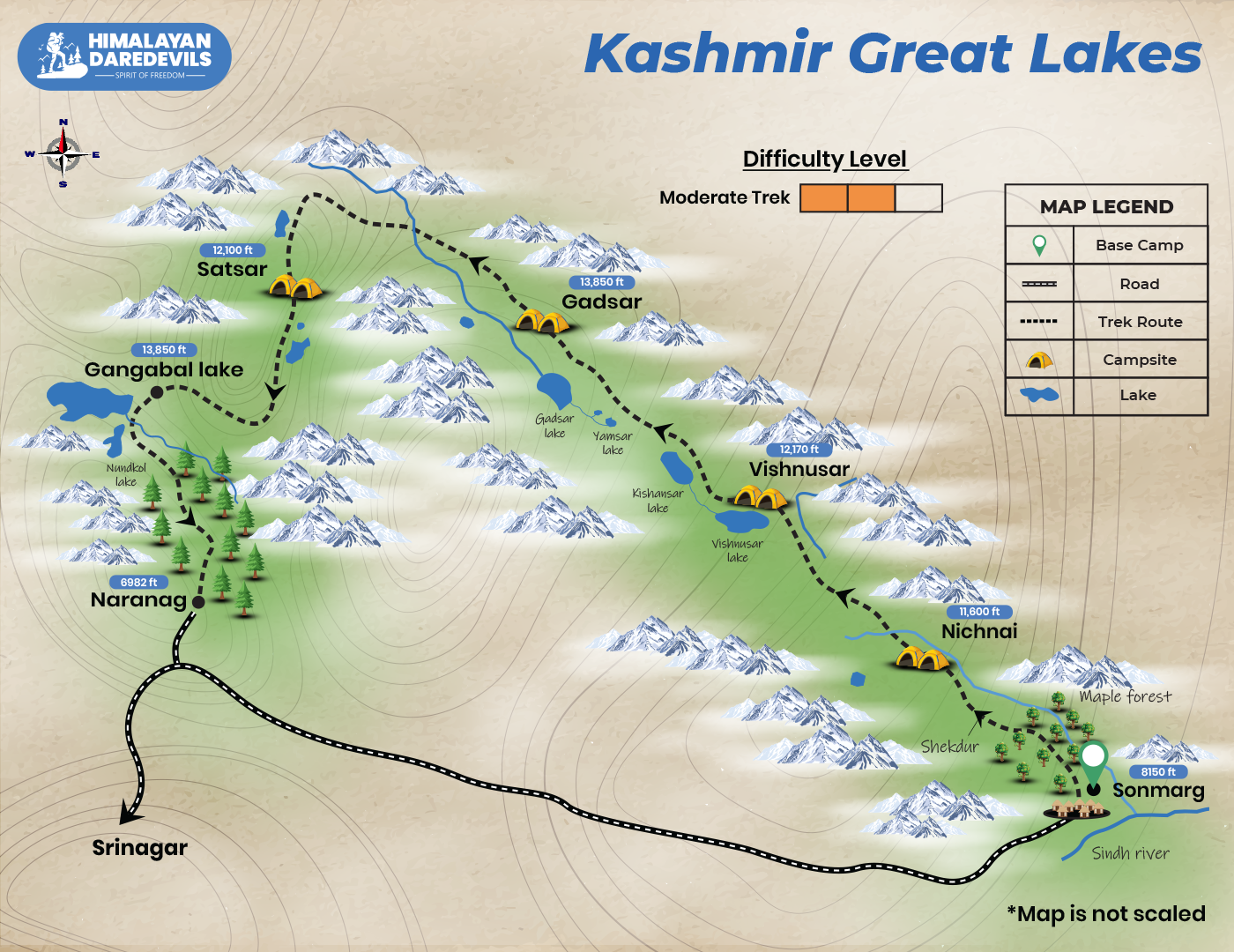
Trek Review Videos
Inclusions
Exclusions
1. All accommodation during the trek on sharing basis in tent/homestay
2. All meals during the trek vegetarian
3. Tent sleeping bags and all other camping gear
4. Safety equipment (medical kit oxygen cylinders oximeter etc.)
5, Certified Trek leader
6. Cooks, Helpers, Guides
7. Porters and mules to carry centralized equipments
8. Trekking permits and forest camping charges
1. Any kind of personal expenses.
2. Food during the transit.
3. Mules or porter to carry personal luggage.
4. GST– Tax on trek fee (5% )
5. Transport (Non Ac) ( Srinagar to Srinagar)
6. Insurance ( Please note for this trek, the trek insurance is mandatory)
7. Any kind of emergency evacuation charges
8. Any expense incurred or loss cost by reasons beyond our control such as bad weather, natural calamities (landslides, floods), flight delays/rescheduling/ cancelations, any accidents/medical evacuations, riots/strikes/war/pandemics etc.
9. Anything not specifically mentioned under the head.
1. All accommodation during the trek on sharing basis in tent/homestay
2. All meals during the trek vegetarian
3. Tent sleeping bags and all other camping gear
4. Safety equipment (medical kit oxygen cylinders oximeter etc.)
5, Certified Trek leader
6. Cooks, Helpers, Guides
7. Porters and mules to carry centralized equipments
8. Trekking permits and forest camping charges
1. Any kind of personal expenses.
2. Food during the transit.
3. Mules or porter to carry personal luggage.
4. GST– Tax on trek fee (5% )
5. Transport (Non Ac) ( Srinagar to Srinagar)
6. Insurance ( Please note for this trek, the trek insurance is mandatory)
7. Any kind of emergency evacuation charges
8. Any expense incurred or loss cost by reasons beyond our control such as bad weather, natural calamities (landslides, floods), flight delays/rescheduling/ cancelations, any accidents/medical evacuations, riots/strikes/war/pandemics etc.
9. Anything not specifically mentioned under the head.
What should you carry for the Kashmir Great Lakes Trek
- Trekking shoes: A good pair of trekking shoes is essential for a comfortable and safe trek. Look for shoes that are sturdy, provide good ankle support, and have a good grip on different types of terrain.
- Backpack with rain cover (50-60 ltr): A backpack is necessary to carry all your gear. Make sure it's the right size for your trek, and comes with a rain cover to keep your belongings dry in case of rain.
- Thermals (upper and lower): Thermals are lightweight and comfortable base layers that help regulate your body temperature in cold weather. Bring both upper and lower thermals to keep warm.
- 3 T-shirts (advisable quick dry): Choose quick-drying T-shirts made from breathable and moisture-wicking materials. This will help keep you cool and dry during your trek.
- 2 trek pants: Choose lightweight and comfortable trek pants that are easy to move in and can dry quickly if wet.
- Jacket (-10 degrees): A warm jacket is essential for cold weather. Choose a jacket that is waterproof and windproof, and provides good insulation.
- Fleece or hood (2): Fleece jackets or hoodies are great mid-layer options to keep warm. Bring at least two, as they can also be used as an extra layer at night.
- Sunglasses (UV protected): Protect your eyes from the sun's harmful UV rays with sunglasses that are designed for outdoor activities.
- Sun cap: A sun cap or hat with a brim will protect your face and neck from the sun.
- Hand gloves: Bring a pair of lightweight gloves to keep your hands warm and protected from wind and sunburn.
- Woolen cap: A woolen cap will keep your head and ears warm at night or in cold weather.
- Socks (3 pairs min): Bring at least three pairs of good quality socks that are moisture-wicking and provide good cushioning and support for your feet.
- Headlamp: A headlamp will come in handy if you're hiking in low-light conditions or need to find your way in the dark.
- Trekking pole (if needed): Trekking poles can help reduce strain on your legs and provide additional support on steep terrain.
- Rain cover\poncho: A rain cover or poncho will keep you and your gear dry during unexpected rain showers.
- Day pack (if you plan to offload your bag): If you plan to offload your backpack during the trek, bring a smaller day pack to carry essentials like water, snacks, and a first aid kit.
- A toiletry kit: Bring a small kit with personal hygiene items, such as a toothbrush and toothpaste, wet wipes, hand sanitizer, and toilet paper.
- Lunchbox, cup, spoon: If you plan to bring your own food, bring a lunchbox, cup, and spoon to carry and eat your meals.
- 2 one-liter bottles: Staying hydrated is crucial, so bring at least two one-liter bottles to carry water.
- 2-3 plastic covers to keep your wet or used clothes: Plastic bags are useful for keeping wet or dirty clothes separate from the rest of your belongings. They can also be used to pack out any trash or waste you generate during the trek.
How to Reach for Kashmir Great Lakes Trek
The Kashmir Great Lakes Trek adventure starts from Srinagar, the hottest summer destination ever in ‘Jammu and Kashmir’. Those wishing to visit this beautiful place can make use of a flight, train or simply, road transport.
There is an international airport by the name Sheikh ul-Alam International Airport (SXR). It connects especially to the busy cities of Delhi, Mumbai, and Bengaluru. One just needs to book a flight to Srinagar and once there can simply hire a cab to the desired starting point of the trek. The starting point of Sonmarg is about 80 km away from Srinagar.
The nearest railway station to Srinagar is in Jammu, around 270 kilometers away, and the train station is called Jammu Tawi Railway Station. The easier option would be to take a taxi, or bus which operates between the two cities, and it would take around 7 to 8 hours to cover the distance. A different option would be to reach Anantnag or Banihal, which form a closer location to the given starting points of the trek.
If you may be nearby like in Delhi or Chandigarh, you can simply take a bus to Srinagar, for the long journey along the road is quite mesmerizing, but if not it can be quite tough for one to sit for around 14-16 hours straight.
When you reach Srinagar, you will be taken by car to Sonmarg, which is the starting point of the trek. Mostly, all Trekking operators provide transportation and permits to trekkers for easier traveling.
Fitness and preparation guide for Kashmir Great Lakes Trek
Trekking to Kashmir Great Lakes demands a combination of cardiovascular endurance, strength, and flexibility. Here's a comprehensive fitness preparation guide to help you get trek-ready:
1. Cardiovascular Endurance
For easy to moderate treks like valley of flowers, cardiovascular endurance is essential. Aim to run 4.5 kilometers in under 40 minutes consistently before your trek. Start by jogging at least 5 days a week. If you're new to running, begin with 2 km and gradually increase the distance over 2-3 weeks. By consistently building up your stamina, you'll ensure that you can handle the long, uphill walks.
How to prepare:
Start running 2-3 km daily
Gradually increase to 4.5-5 km in 6-8 weeks
Focus on completing 4.5 km in less than 40 minutes by the end of your training
2. Lower Body Strength
Strong legs are crucial for trekking as they power you through steep ascents and provide stability on downhill paths. Incorporate exercises that target your quadriceps, hamstrings, glutes, and calves.
Key Exercises:
Squats: Build strength for ascending terrain by targeting your quads, hamstrings, and glutes.
Lunges: Improve stability, flexibility, and control while trekking on uneven terrain.
Training Tips:
Perform 3 sets of 12-15 squats and lunges 3-4 times a week
Gradually increase the number of repetitions as your strength improves.
3. Core Strength
A strong core helps maintain stability and balance on uneven, rocky trails. Engaging your core during trekking will also reduce fatigue and protect your back from strain
Core Exercises:
Planks: Strengthen your abdominals, obliques, and lower back, crucial for maintaining posture
Russian Twists: Enhance your rotational stability, preventing injuries during twists and turns.
Training Tips:
Start with holding planks for 30 seconds, gradually increasing to 1-2 minutes
Perform 3 sets of Russian twists with 20 repetitions per side.
4. Upper Body Strength
Trekking often requires carrying a heavy backpack, so building upper body strength is vital. Exercises targeting your shoulders, chest, and back will improve your ability to carry the load comfortably and maintain posture throughout the trek.
Key Exercises:
Push-ups: Strengthen your chest, shoulders, and triceps for carrying your backpack
Pull-ups/Bodyweight Rows: Strengthen your back muscles to improve posture and prevent fatigue.
Training Tips:
Do 3 sets of 10-15 push-ups and 3 sets of 5-10 pull-ups or bodyweight rows at least 3 times a week.
5. Full Body/Cardio Workouts
Incorporating full-body exercises like burpees and mountain climbers boosts your cardiovascular endurance and strengthens both upper and lower body muscles.
Key Exercises:
Burpees: Boosts cardiovascular endurance and overall strength
Mountain Climbers: A dynamic movement that strengthens your core, chest, shoulders, and legs.
Training Tips:
Perform 3 sets of 10-12 burpees and 3 sets of 20 mountain climbers (10 per leg) to build stamina.
FAQs of Kashmir Great Lakes Trek
The best time to visit the Kashmir Great Lakes trek is during the months of July, August and September. The weather during this time is pleasant, the temperature is neither too cold nor too hot and the emerald green meadows are in full color, scattered with small alpine flowers.
The Kashmir Great Lake Trek is a moderately difficult trek. The altitude and the terrain of the trek demands a good level of fitness from the trekkers, also stretching over a distance of 75 Kms, the Kashmir lake trek will take 7 days to complete. Walking everyday for 5 to 7 hours to cover around 9 to 12 kilometers can be difficult if one is not physically fit.
The Great Lakes Trek is 75 Kilometers long and takes about 7 days to complete. The trekkers will have to walk 9 to 12 Kilometers everyday to finish the trek in time. To reach the alpine lakes of Kashmir one will have to start the journey from Sonmarg (2,377 m) slowly climbing up to reach the highest point of the trek at Gadsar Pass (4,191 m) and then finish it at Naranag (2,073 m).
Yes, a permit is required to go on the Kashmir Great Lake Trek. The permits are issued by The Jammu and Kashmir Tourism Department, these permits are usually included in the trekking packages.
The highest point of the KGL trek is the Gadsar Pass which is at about 4,191 meters. The trek starts from Sonamarg at 2,377 meters and while trekking to the 7 lakes trek one gains an altitude of about 1,814 meters.
- Vishansar Lake (3,658 m)
- Kishansar Lake (3,688 m)
- Gadsar Lake (3,810 m)
- Satsar Lake (3,658 m)
- Nundkol Lake (3,505 m)
- Gangbal Lake (3,597 m)
- Twin Lakes (Nundkol & Gangbal)
Himalayan Daredevils provides the best trekking experience at an affordable rate. The things included in the KGL Trek package are as follows:
1. All accommodation during the trek on sharing basis in tent/homestay
2. All vegetarian meals during the trek
3. Tent sleeping bags and all other camping gear
4. Safety equipment (medical kit, oxygen cylinders, oximeter etc.)
5, Certified Trek leader
6. Cooks, Helpers, Guides
7. Porters and mules to carry centralized equipments
8. Trekking permits and forest camping charges
The Kashmir Great Lakes trek is filled with scenic vistas of snow peaked mountains and glacial lakes. To enjoy such bounties of mother nature without any hassles one has to be fully prepared. The trek leading to the 7 lakes is 75 KM in length and one has to be physically fit to trek these mountains with ease. It is recommended that you follow a weekly workout plan for at least a month before going on the trek. Weekly Workout Plan : Cardio : Jogging, aiming to complete 5 KM in under 35 minutes. Core & Stability : Planks, Yoga, crunches Leg Strength : Squats, Lunges, Situps. Aim to do 3 sets of 10 each. Along with the physical aspects one has to make sure to bring along all the necessary equipment and gears.
Yes, complete beginners can attempt the KGL Trek provided they prepare for it physically. The Kashmir Great Lakes trek is not an easy trek, the distance and the altitude makes it a moderately difficult trek making it a bit challenging to the beginners. A first time trekker will have to follow the weekly workout plan to be physically prepared for the trek.
The high altitude terrain of the Himalayas come with their own set of risks, the same can be said for the KGL trek, but these risks can easily be managed by taking the right precautions and doing the right preparations. Things like carrying the right gear, trying to be physically fit for the trek, and most importantly opting for the right trekking company will make the trek totally safe.
Yes, the great lakes trek is generally safe. The trek sees thousands of adventurers every year, who complete the trek without any difficulties.
The terrain of the KGL trek though challenging can be tackled easily if you trek along with the right trekking company.
The trek also being in the Kashmir region raises concerns because of its history of political conflicts. It should be noted that the KGL trek is far from any conflict prone zones.
No, mobile network and charging points are not available at the KGL trek. The KGL Trek takes you to one of the remote destinations in India far from any modern infrastructure and villages, hence the unavailability of network and electricity.
At the beginning of the trek, Jio, Airtel and BSNL may work but as you gain altitude the network weakens. So, you should tell your loved ones that you are going to be offline for at least a week.
Yes, the KGL trek is filled with glacial lakes and streams that provide crystal clear drinking water. Trekkers and guides use these glacial sources for drinking without filtering it. If you are someone with a sensitive stomach, you can carry water purification tablets or boil the water before drinking it.
Cancellation policy
Life is unpredictable and we understand sometimes you have to cancel or change your trip dates and it is our endeavour to make it as easy possible for you. However, please understand we plan everything including guide fees, permits, accommodation and ration in advance. Therefore any cancellation means inconvenience and certain losses to the people involved in various stages of programme. Keeping that in mind, our cancellation charges are as below-
Cancellation prior to 30 days from start of the event: Get monetary refund with 15% of cancellation charges on trek fee.
Cancellation between 30 days and 15 days to the start of event: 50% on trek fee is non refundable and the remaining 50 % will be given as cash voucher which is valid for 1 year.
Cancellation less than 15 days to the start of event: No refund.
Please note cancellation will be only accepted by email.
Booking amount is non refundable
Note: The Himalayan Daredevils reserves the right to cancel a programme before departure in the event of logistical problems arriving due to natural calamities, strikes, wars on any other circumstances that makes the event inadvisable. In this case, 50% on trek fee is non refundable and the remaining 50 % will be given as cash voucher which is valid for 1 year.
Itinerary changes & trip delays:
We plan itineraries based on the information at the time of planning and in rare circumstances, there are subject to change. In the event that the itinerary is changes or delayed due to unforeseen circumstances such as bad weather conditions, transportation delays, government intervention, landslides etc. Security concerns and government orders often lead to last-minute cancellations in Jammu & Kashmir. While we make all the preparations to run the trek, we cannot guarantee that the trek will run. If such a situation occurs, we will cancel the trek and our cancellation policy will apply. We will always aim to give you the best experience possible. However The Himalayan Daredevils are not be held responsible for the cost of delay or changes.
Why Choose Us
Our Best Performance
50,000+
Trekkers
PAN India Treks
250+
Treks
Professional
and Experienced Staff
Best
Grade Equipment
Well Organised
Trek Itineraries
Related Blogs
Read and get more about our treks
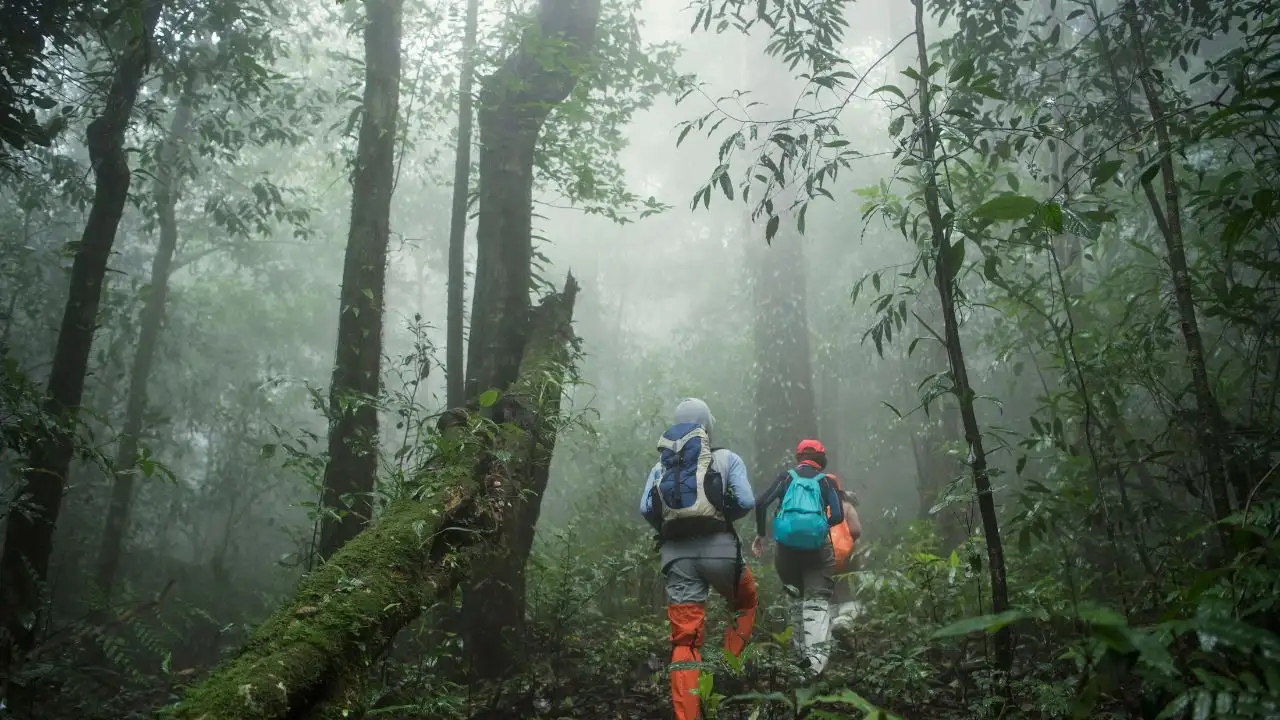
Hampta Pass vs Pin Bhaba Pass: Which Trek to Choose?
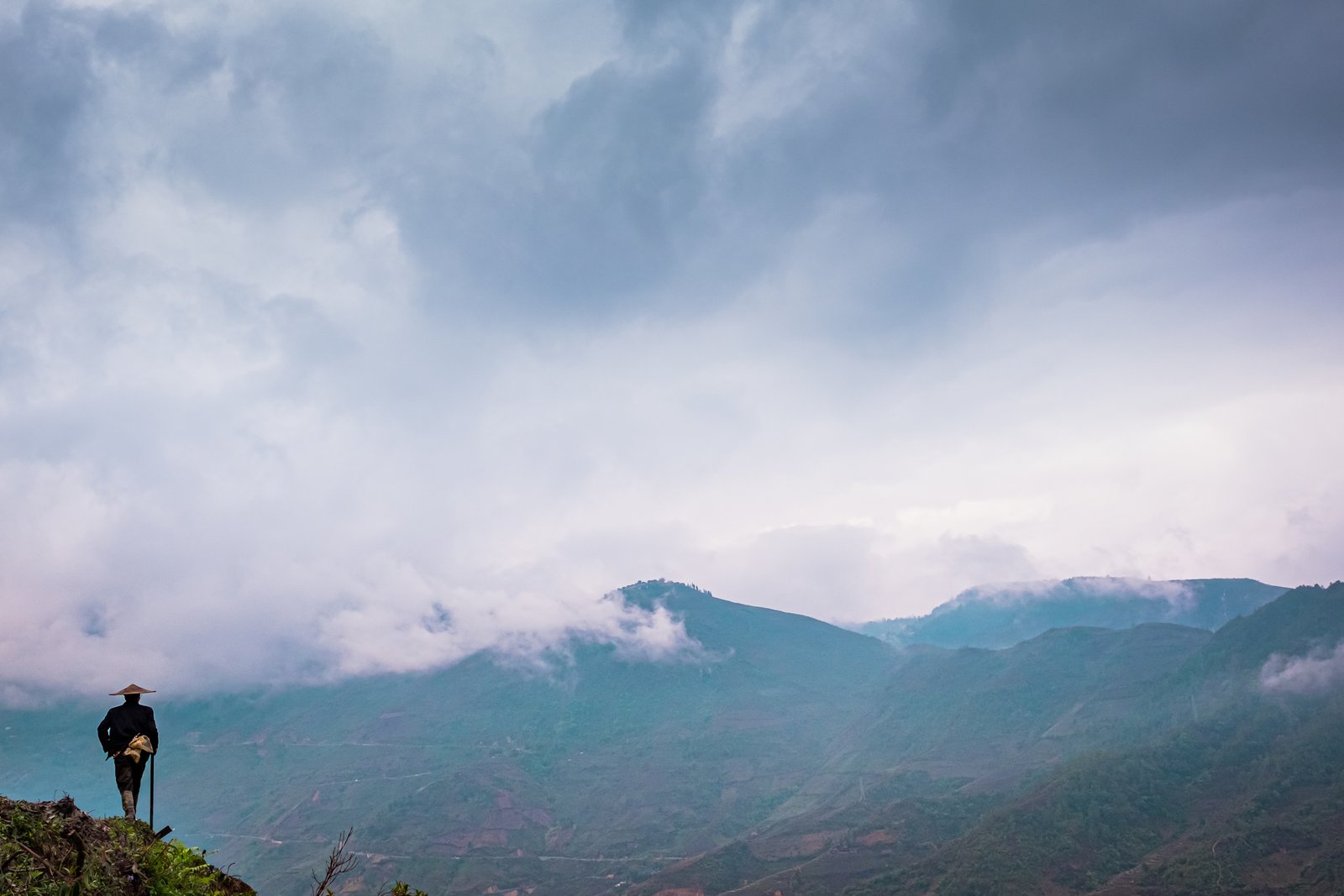
Top 5 Himalayan Monsoon Trek in India
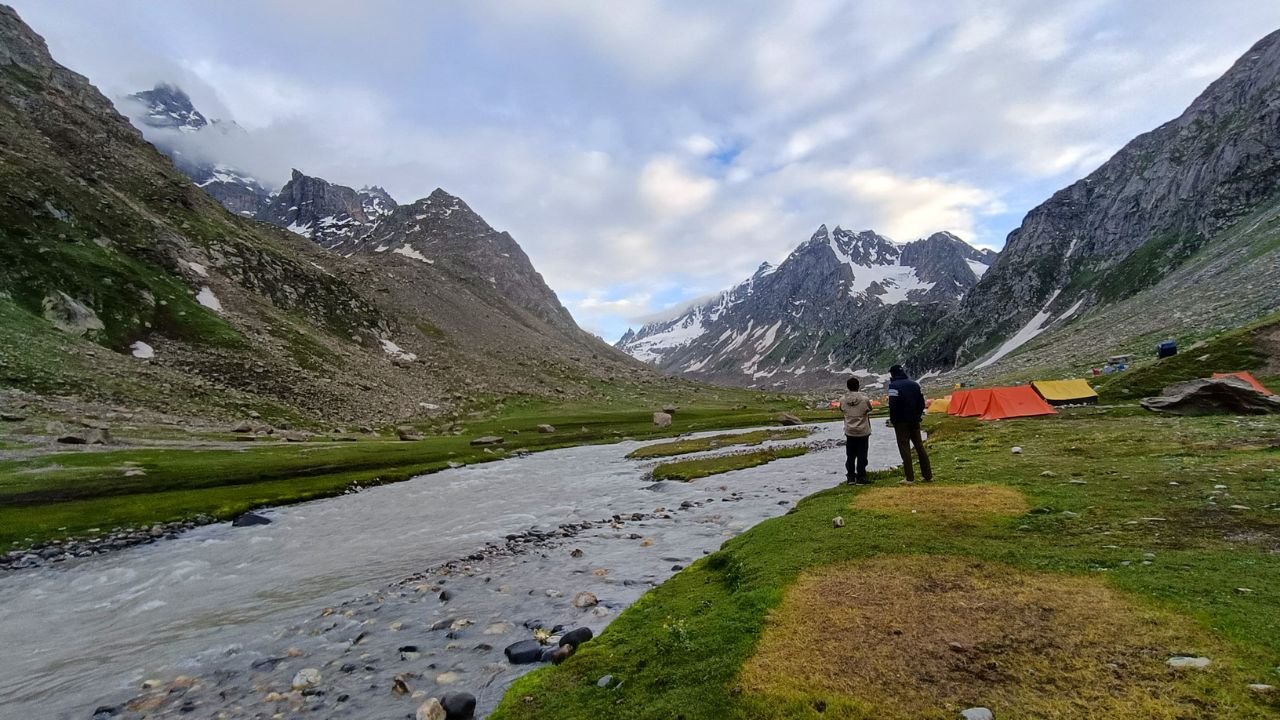
Hampta Pass trek: Detailed Itinerary, Trekking Essentials & Best Time to Visit
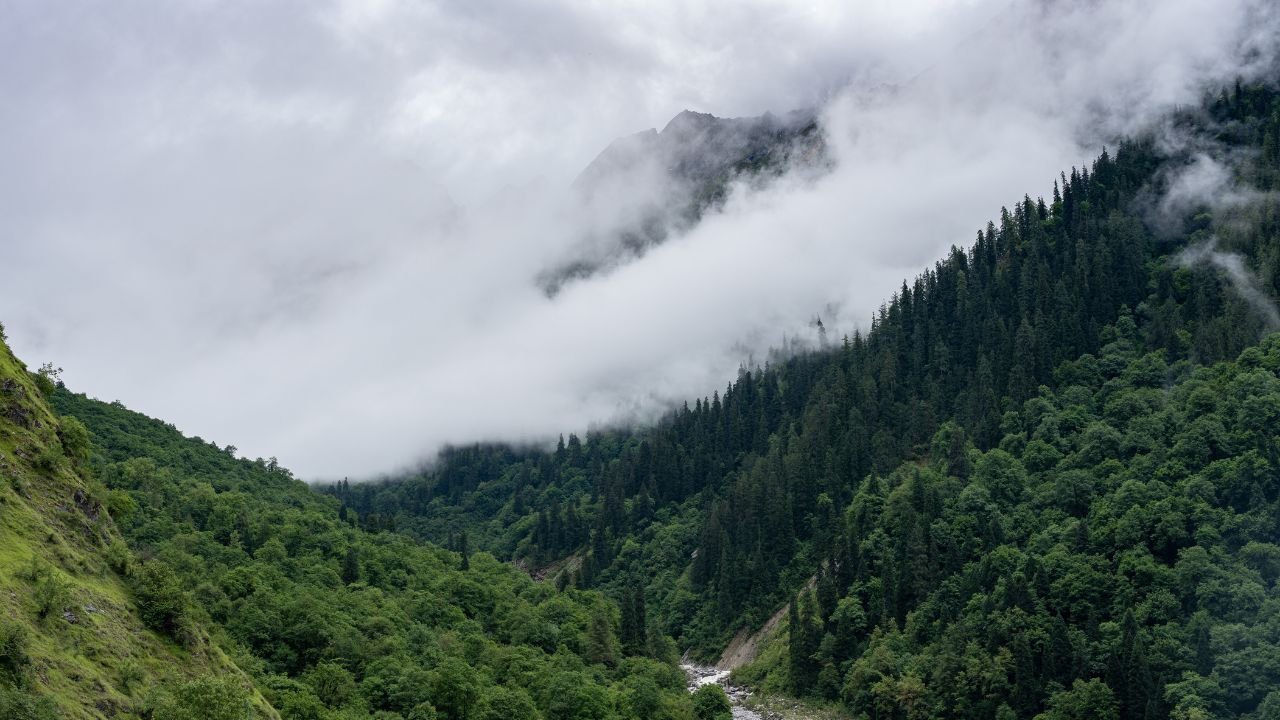
Valley of Flowers Trek Complete Guide: Itinerary, Tips & More
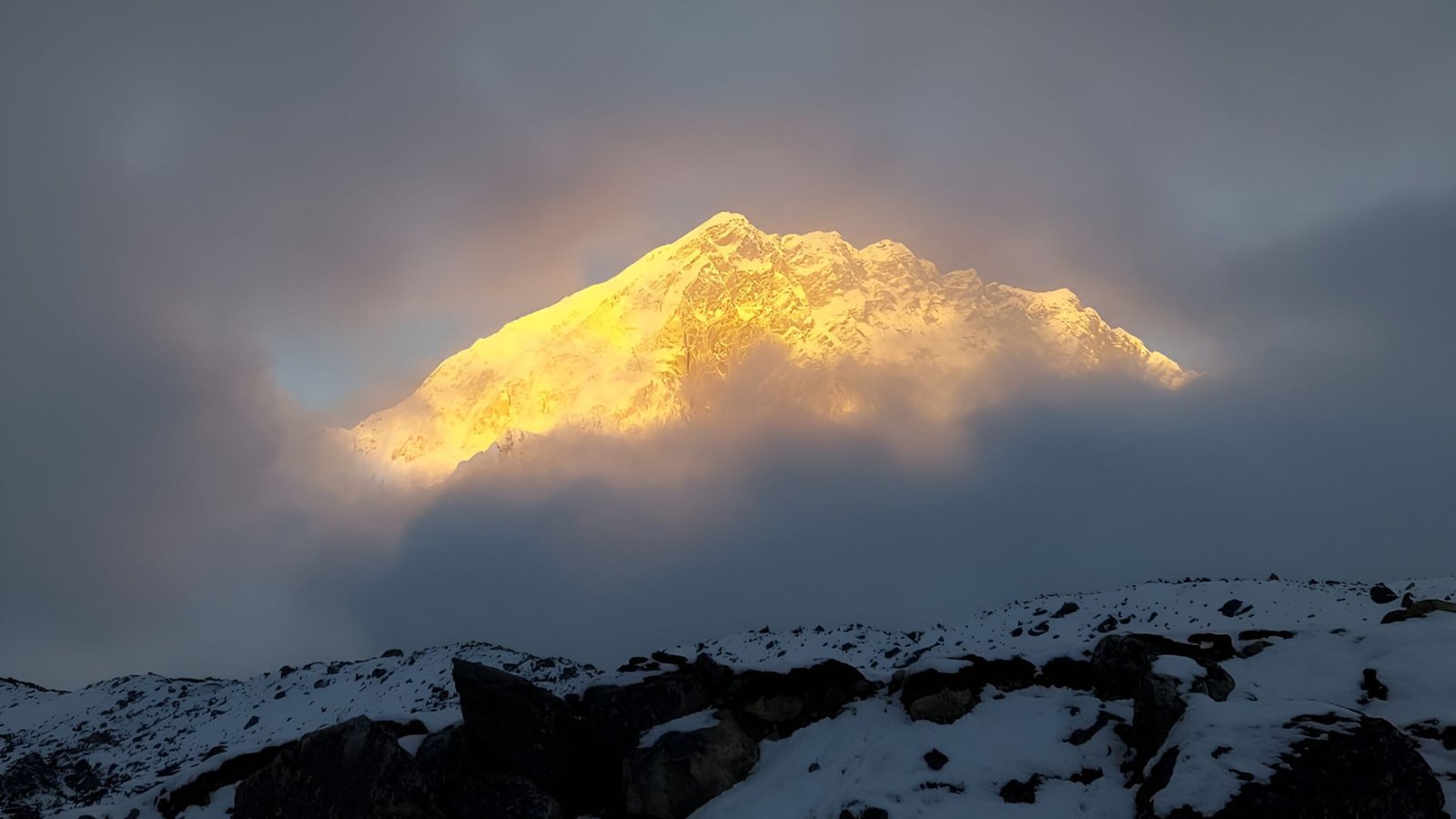
Everest Base Camp Trek: Guided vs Solo Experience
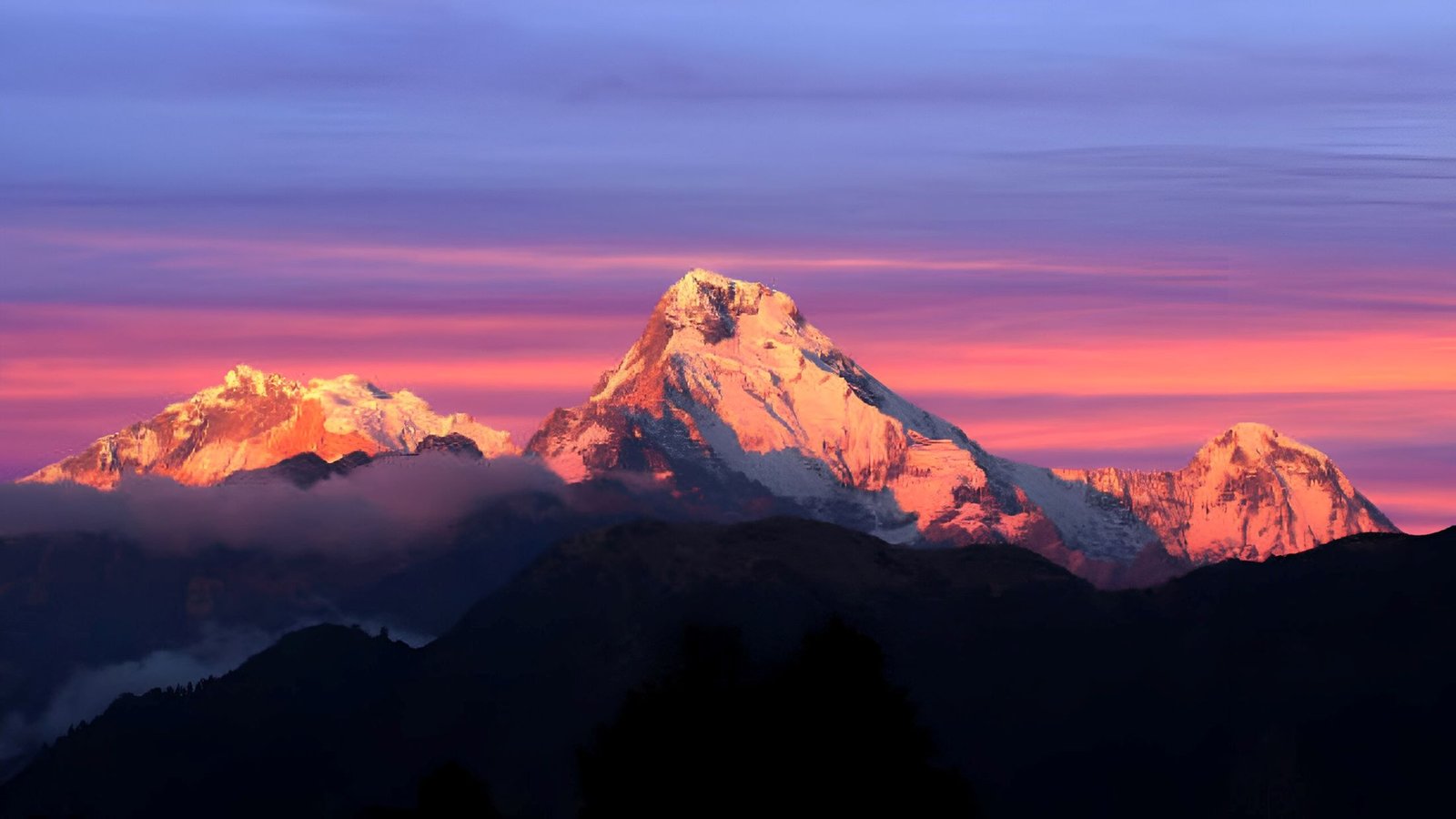
Top 7 Mistakes to Avoid During Annapurna Base Camp Trek

How to Pick the Perfect Kedarnath Travel Package for Your Next Trip
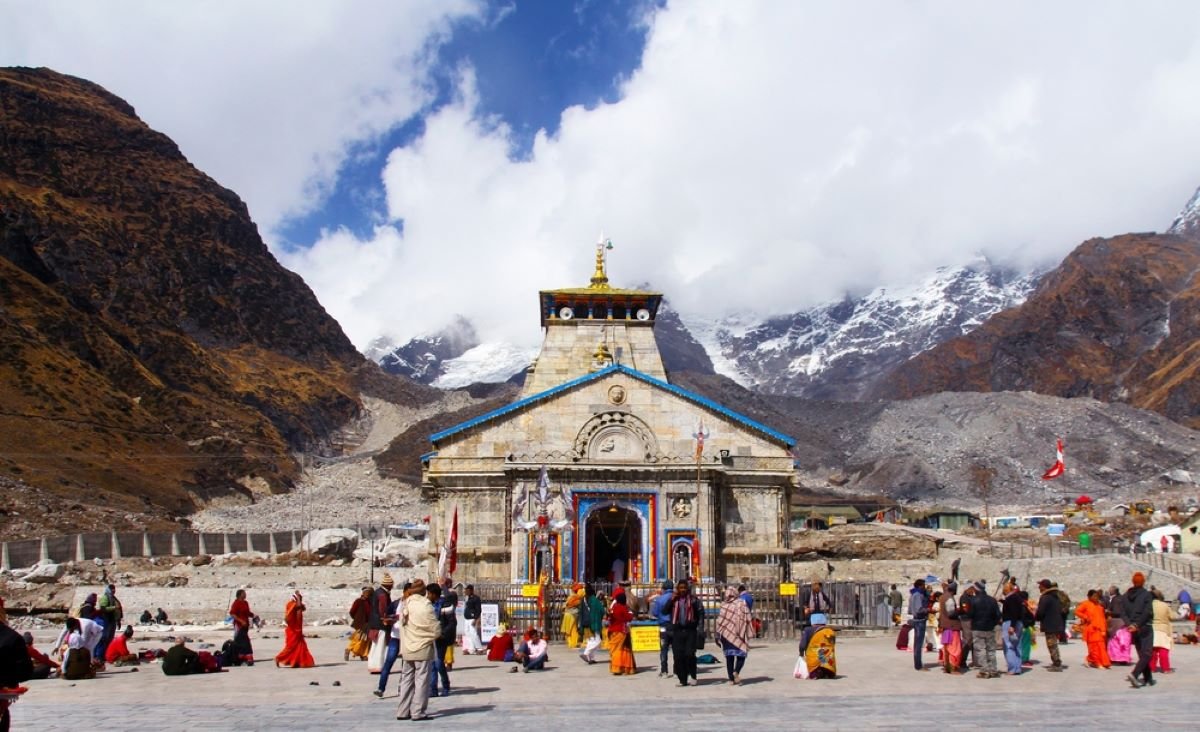
Kedarnath Temple Yatra Experience- A Complete Journey Guide

What Makes the Kashmir Great Lakes Trek Unforgettable

Best Summer Treks in Himalayas- Top Picks for 2025

Hampta Pass Trek to Chandratal: A Journey That Stays With You

How Long Is the Kashmir Great Lakes Trek & What Can You Expect

Kashmir Great Lakes Trek – A High-Altitude Journey to Remember
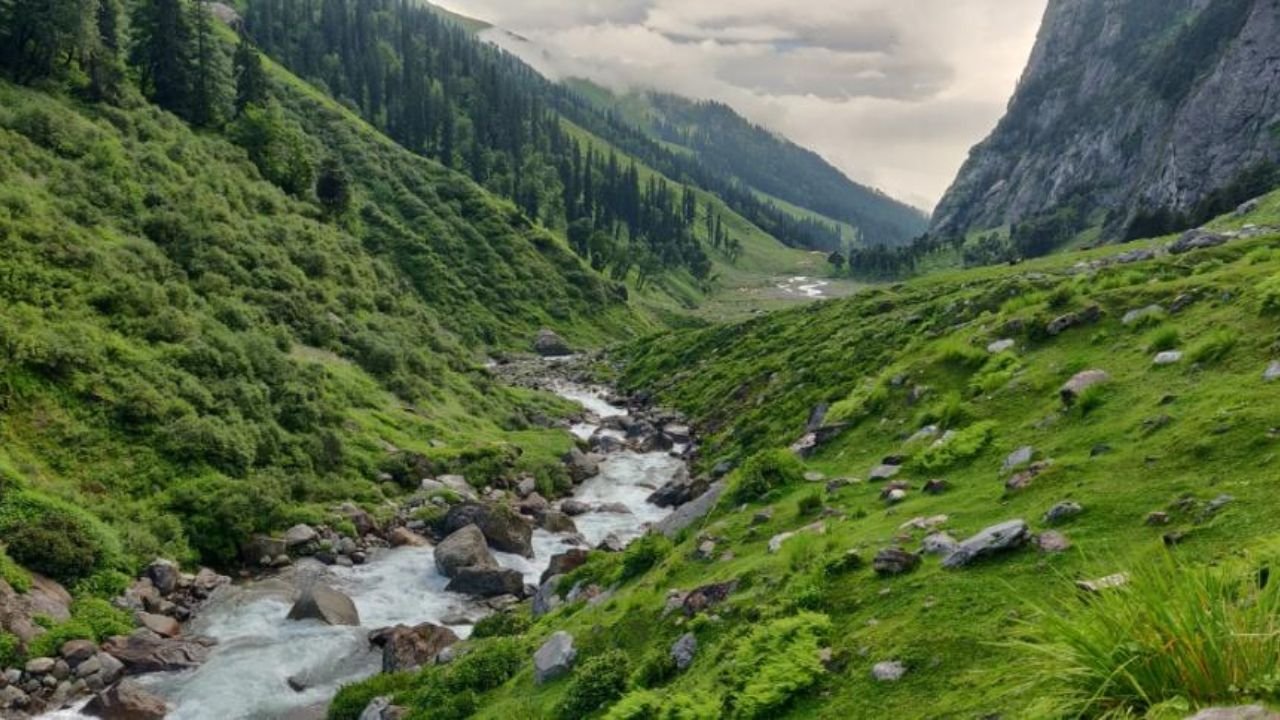
Hampta Pass Trek: Know The Route and The Package Before You Go
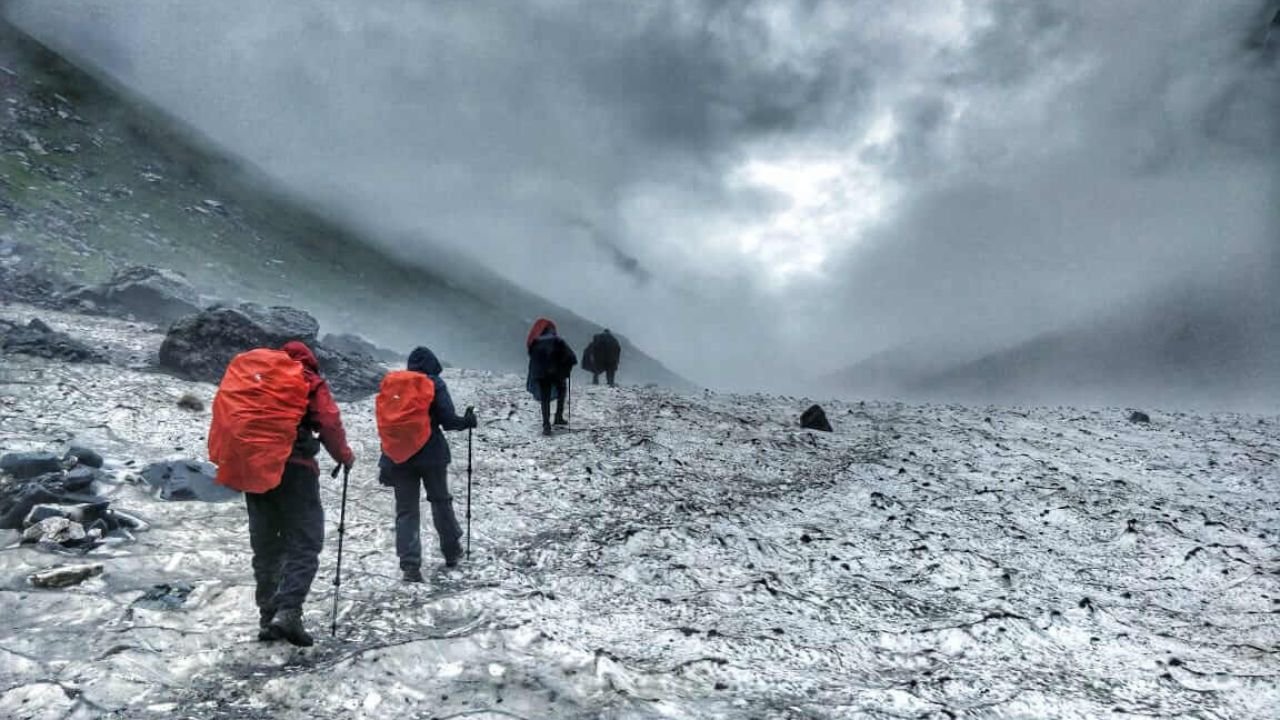
Hampta Pass Trek - How Long Is It? And The Best Time To Visit
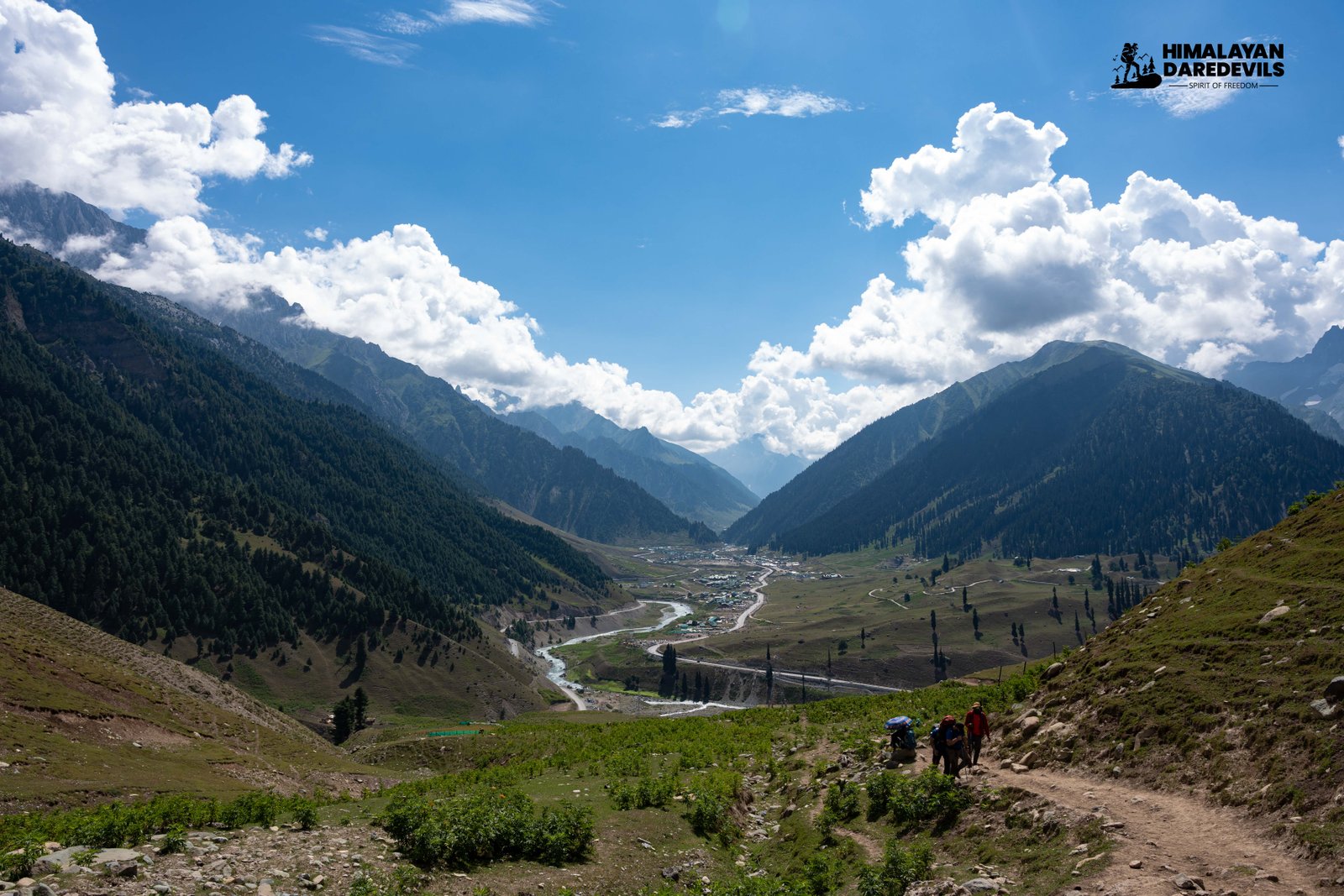
Kashmir Trek Comparison: Kashmir Great Lakes Vs Tarsar Marsar

Fitness Mistakes That Can Ruin Your High-Altitude Trek

11 Must-Do Himalayan Monsoon Treks in India (July-September)

Essential Trekking Gear for Kashmir Great Lakes Trek
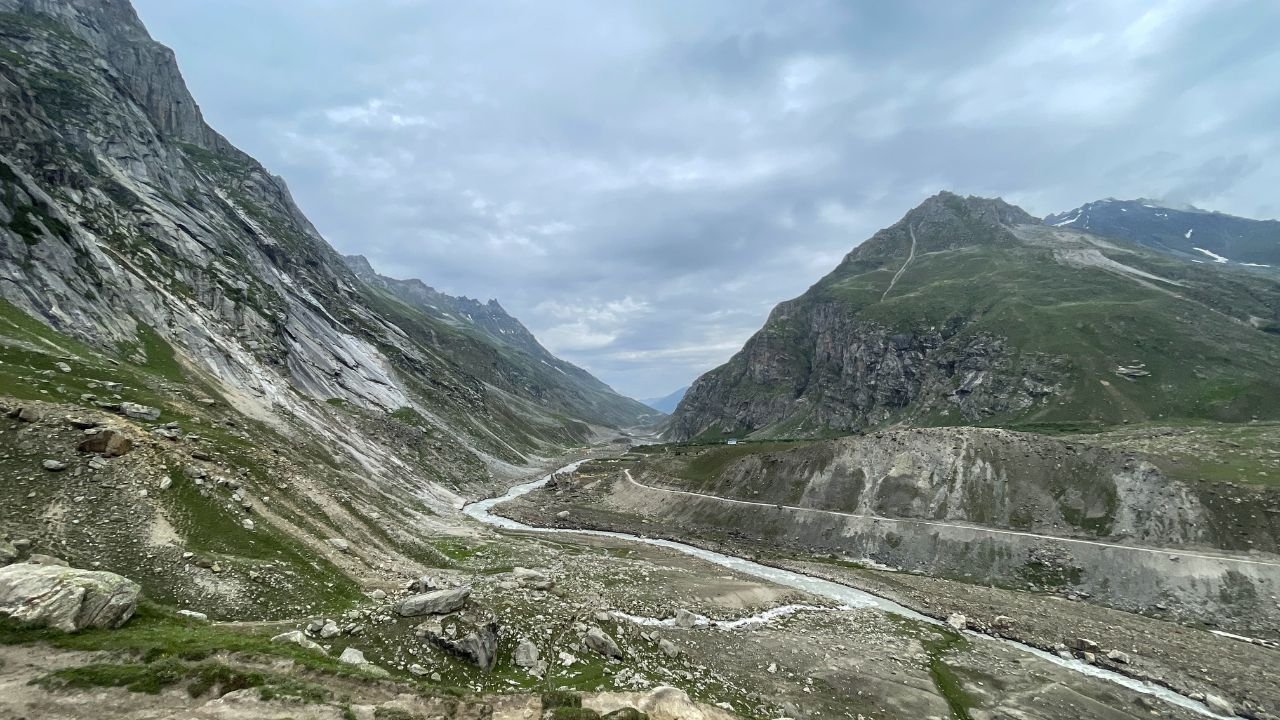
Key Highlights of the Hampta Pass Trek You Shouldn’t Miss
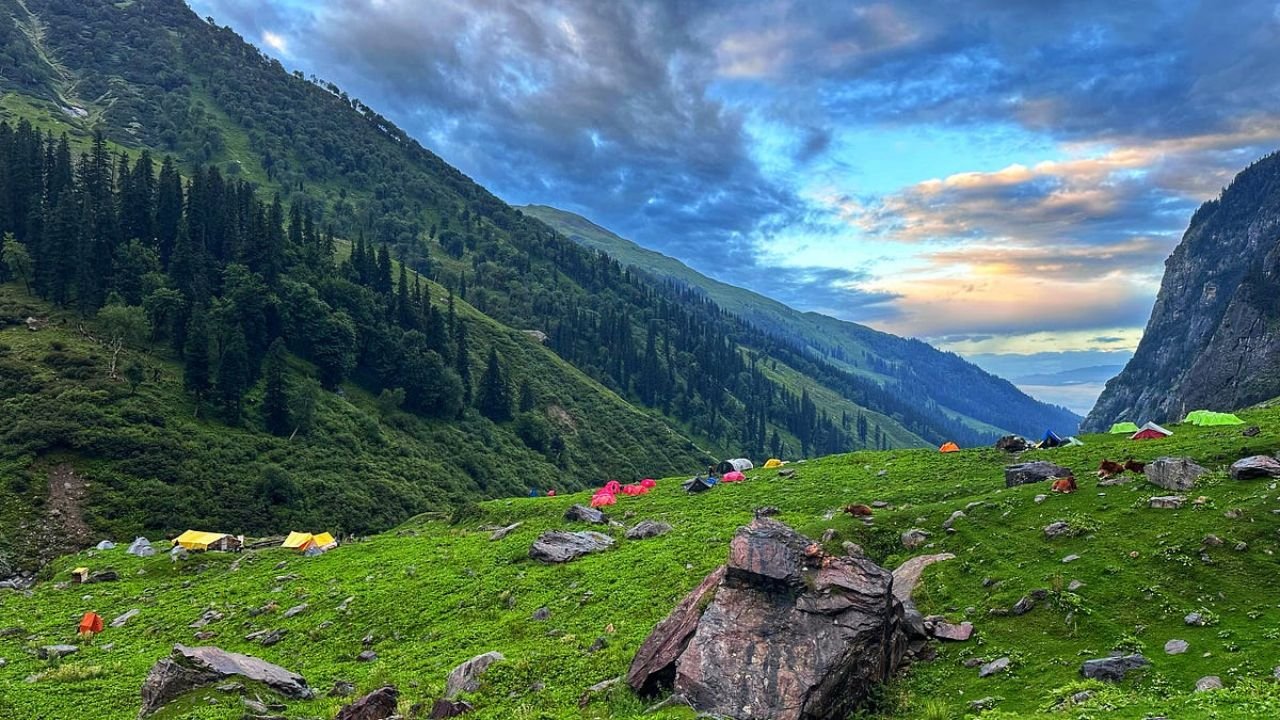
How to Get Fit for the Hampta Pass Trek
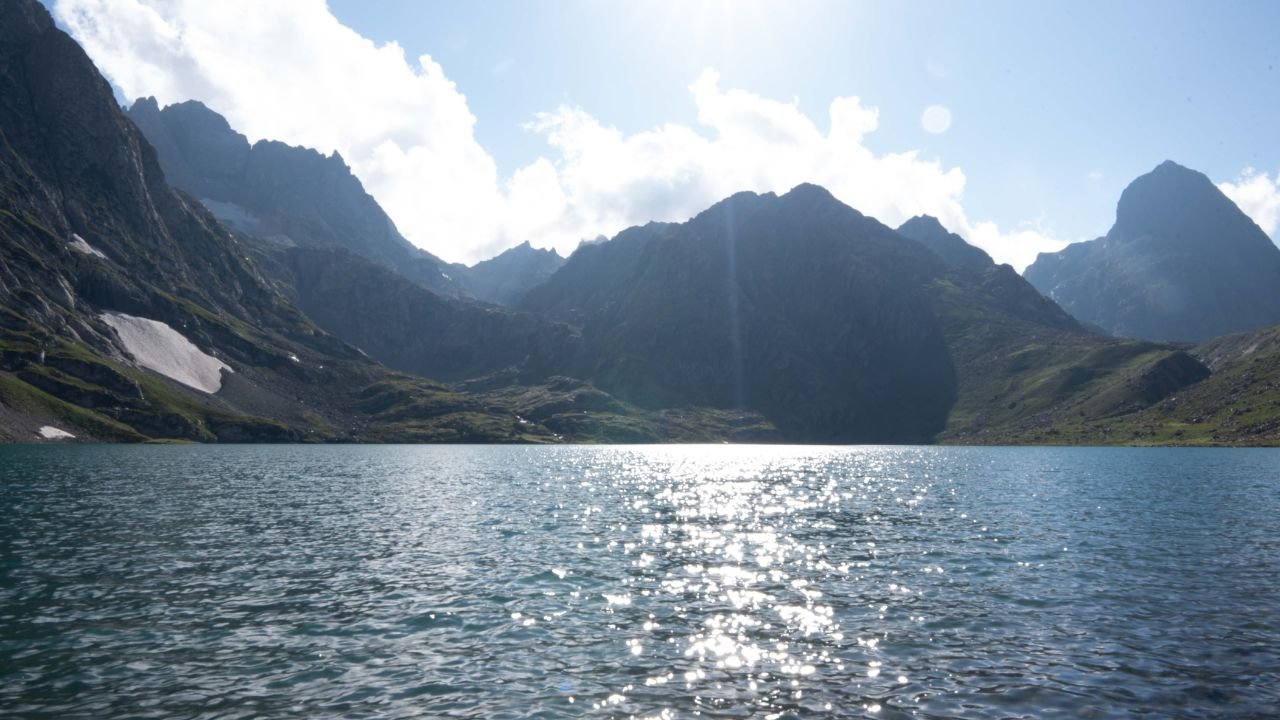
How to Train for the Kashmir Great Lakes Trek: Daily Routine Guide
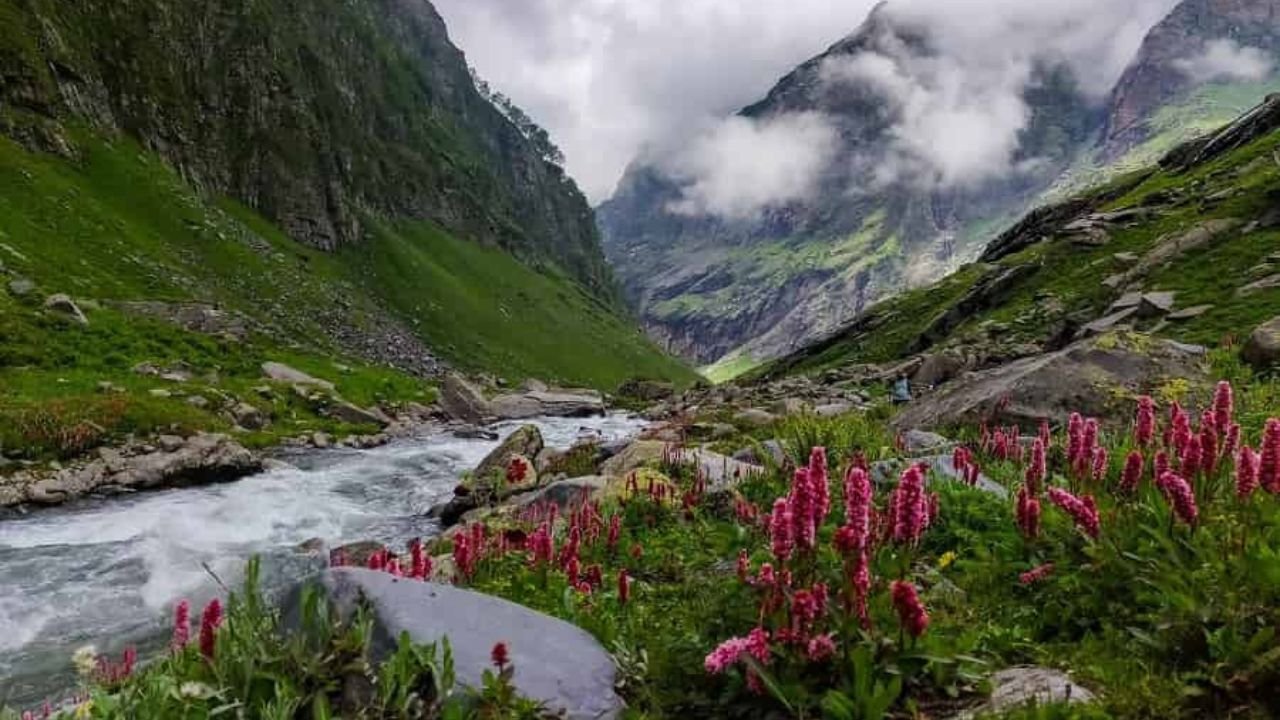
Best Time to Experience the Real Beauty of Hampta Pass Trek
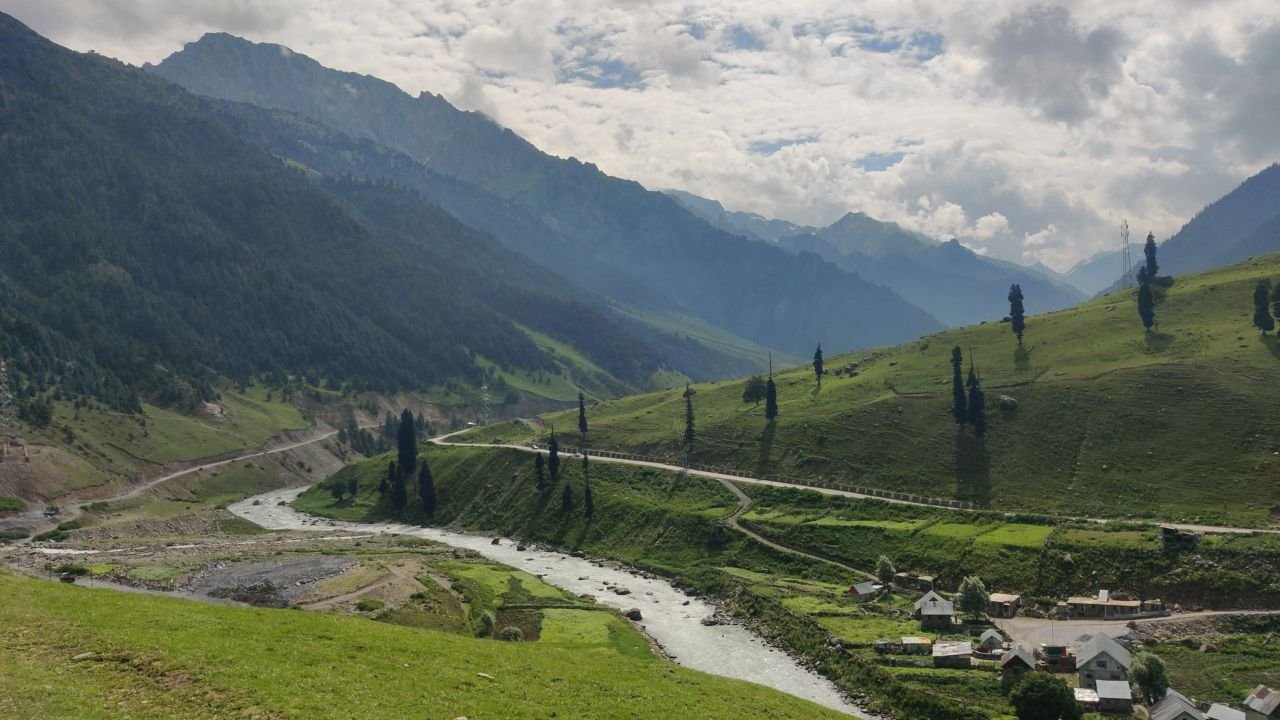
Kashmir Great Lakes trek: Detailed Itinerary, Trekking Essentials & More
